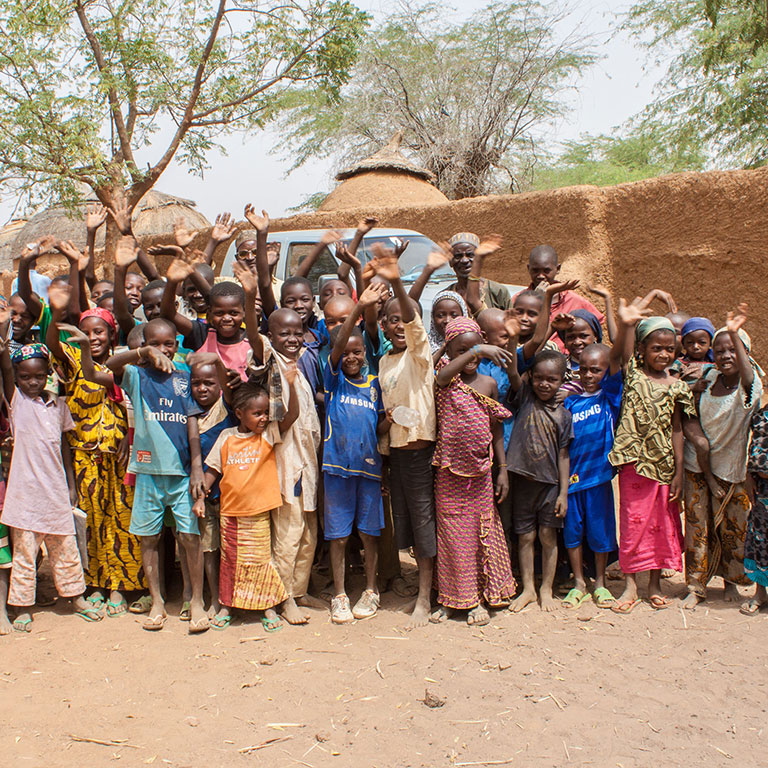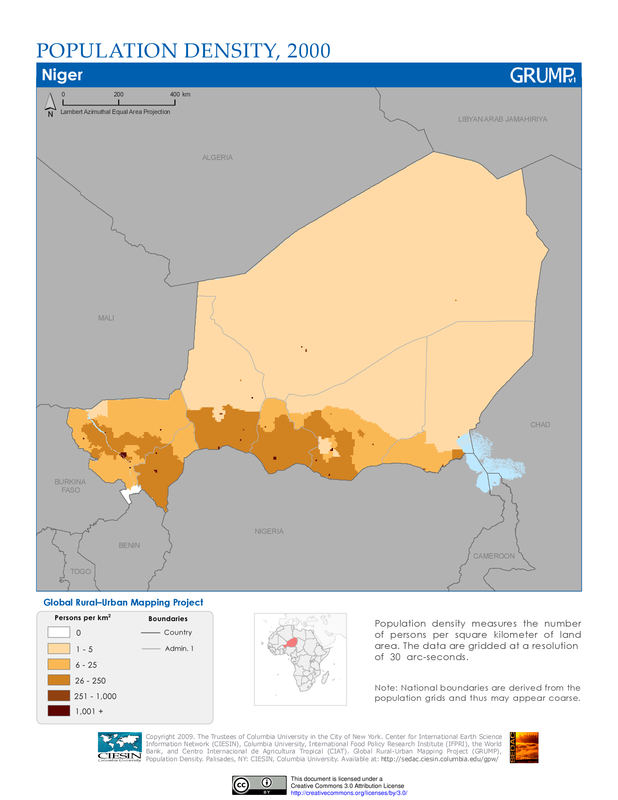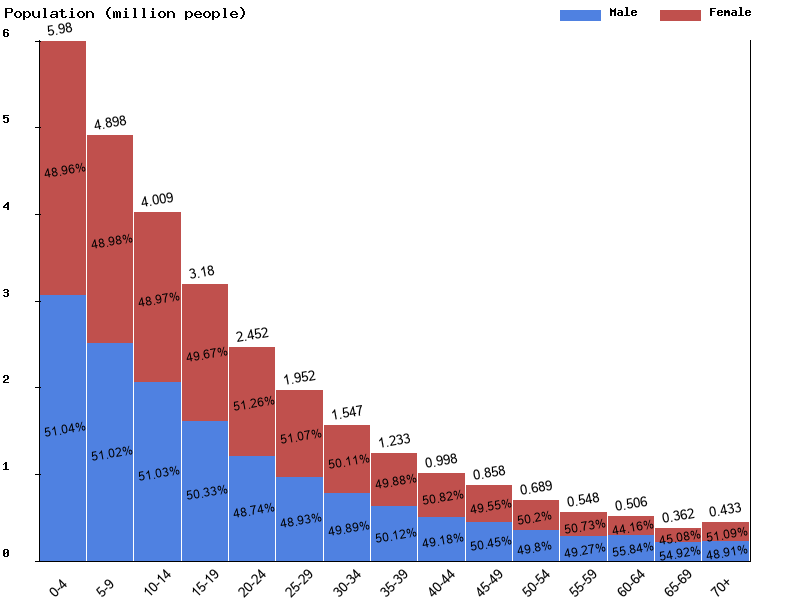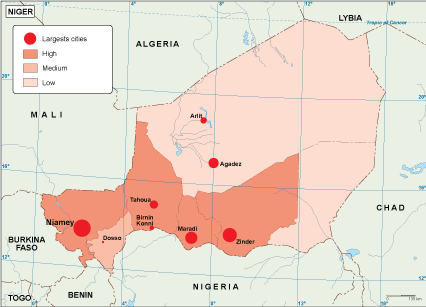The demographic features of Nigeriens, the people of Niger consist of population density, ethnicity, education level, health of the populace, economic status, religious affiliations and other aspects of the population.
The largest ethnic groups in Niger are the Hausa, who also constitute the major ethnic group in northern Nigeria, and the Zarma-Songhai (also spelled Djerma-Songhai), who also are found in parts of Mali. Both groups are sedentary farmers who live in the arable, southern tier. The Kanouri (including Beri Beri, Manga) make up the majority of sedentary population in the far southeast of the nation. The remainder of the Nigerien people are nomadic or seminomadic livestock-raising peoples—Tuareg, Fulani, Toubou and Diffa Arabs. With rapidly growing populations and the consequent competition for meager natural resources, lifestyles of these two types of peoples have come increasingly into conflict in Niger in recent years.
Niger's high infant mortality rate is comparable to levels recorded in neighboring countries. However, the child mortality rate (deaths among children between the ages of 1 and 4) is exceptionally high (274 per 1,000) due to generally poor health conditions and inadequate nutrition for most of the country's children. Niger's very high total fertility rate (6.89 children born per woman, which is the highest in the world), nonetheless, means that nearly half (49%) of the Nigerien population is under age 15. School attendance is low (34%), including 38% of males and 27% of females. Additional education occurs through Koranic schools.
Population
Source: Institut National de la Statistique - Niger
Census results
UN estimates
According to the 2022 revision of the World Population Prospects the total population was 25,252,722 in 2021, compared to only 2 462 000 in 1950. The proportion of children and teenagers below the age of 15 in 2010 was 49%, 48.8% was between 15 and 65 years of age, while only 2.2% was 65 years or older.
Population Estimates by Sex and Age Group (01.VII.2017):
Vital statistics
Registration of vital events in Niger is incomplete. The website Our World in Data prepared the following estimates based on statistics from the Population Department of the United Nations.
Demographic and Health Surveys
Total fertility rate (TFR; Wanted Fertility Rate) and crude birth rate (CBR):
Fertility data as of 2012 (DHS Program):
Ethnic groups
Core health indicators
Religion
- Islam: 99.3%,
- Christianity: 0.3%,
- Animism: 0.2%
- None: 0.1% (2012 est.)
Languages
- Hausa (official)
- Zarma (Djerma)
- French (former official)
See also
- Seasonal migration in Niger
- Women in Niger
- LGBT rights in Niger
References
- UNDP. 2006. Beyond scarcity: Power, poverty and the global water crisis. Human Development Report 2006. Archived 2007-05-02 at the Wayback Machine New York: United Nations Development Programme (UNDP).
- UNDP The Human Development Index reports: Niger.
- Health Organization Niger overview. Includes links to statistics, programs and news on health and demography in Niger.
- WHO "Country Logbook" for Niger. Providing Surveys, Censuses, Monitoring of vital events, Health services & surveillance, Health situation & trend analysis, and Planning & strategic documents .
- ethnologue.com Archived 2012-10-04 at the Wayback Machine: Ethnic and linguistic breakdown for Niger.
- OECD/ AEO 2007 Niger country study Archived 2009-02-25 at the Wayback Machine.
- The AGRHYMET Regional Centre (ARC), Niamey Office Archived 2008-02-19 at the Wayback Machine. Institute of the Permanent Interstate Committee for Drought Control in the Sahel (CILSS) composed of nine member States, including Niger.
- The World Bank, Niger overview and resources.




